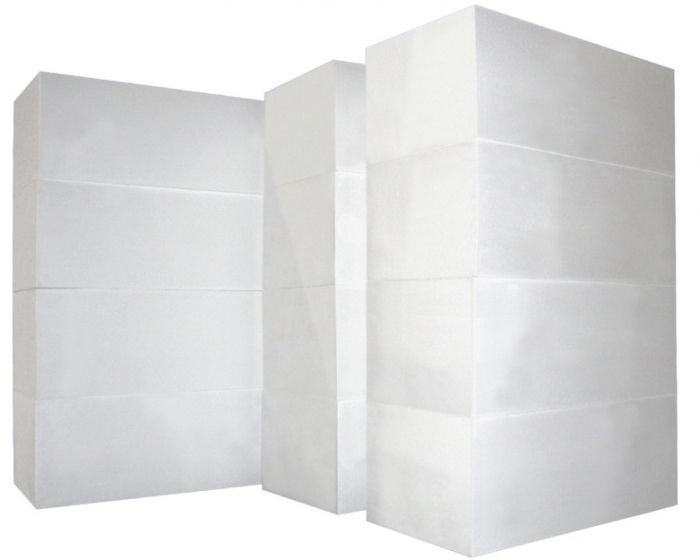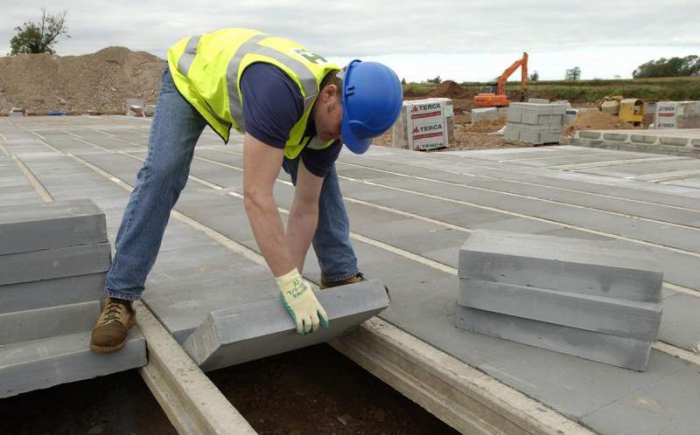Today, the construction sector is developing very actively in our country. As a result, there is an increased demand for products used in this field on the Russian building materials market. For example, polystyrene concrete blocks gained great popularity.
Many entrepreneurs are interested in the production of this building material. There is nothing complicated in this type of activity, however, like any new business, it should be carefully studied to avoid a collision with pitfalls. The technology for the production of polystyrene concrete blocks is quite simple, but you should thoroughly familiarize yourself with all the stages of production and draw up a quality business project.

Manufacturing Process: Stage One
First, the granules are brought into a foamed state. Raw materials are fed into the equipment for the production of polystyrene concrete blocks, it enters through the feed hopper into the pre-foamer using a screw conveyor. Here, under the action of water vapor, the granules are softened.
As a result, the raw materials, foaming, increase in volume and displace the material that has not yet been exposed to steam. Further, thanks to the work of special blades, the granules are mixed. As a result of these manipulations, equipment for the production of polystyrene concrete blocks prevents the adhesion of raw materials and feeds it to the unloading window.

Stage Two
At this stage, the material is dried. Foamed materials contain about fifteen percent of the liquid. In addition, rarefaction is observed in the material due to vapor condensation. If this process is not stopped, it will lead to compression and, as a result, to a reduction in the volume of raw materials, as well as to a significant increase in its density.
To avoid this, the equipment for the production of polystyrene concrete blocks thoroughly dries the granules. Especially popular among entrepreneurs are drying conveyors operating on the pneumodynamic principle. The moisture content of the raw materials in such an installation is quickly reduced to three percent. Further, the material is fed into the aging hopper. Here the product can be from 4 to 12 hours. It depends on the fractionality, moisture and density of the raw materials.

Stage Three
Further, the production technology of this building material provides for the dosage of the components. The dried granules are fed into the receiving hopper of the volumetric batcher through a special pipeline due to the air flow. After this, the raw material enters the mixer, and cement and filler are loaded into the hopper of the weighing batcher. Mixing of materials takes place, after which water is pumped into the tank.
Stage Four
All components are gradually mixed in the mixer. Their dosage is determined by special regulations, each entrepreneur can vary it within the framework of a given standard. Concrete mixing is carried out within five minutes. In this case, it is necessary to regularly check the consistency of the mixture for consistency and ductility.

Characteristics of polystyrene concrete blocks
This building material belongs to the category of slow-burning. Its density varies from 150 to 600 kg / m3. Strength characteristics - from 0.5 to 2.5, which corresponds to 500-600 kg / m3. Frost resistance of polystyrene concrete is F100. The coefficient of thermal conductivity is 0.55-0.12 W / m · ° C. By tensile strength, the material belongs to class B12.5.
Now we will consider what advantages polystyrene concrete blocks have:
- a significant reduction in the capacity of the material;
- the relatively low cost of polystyrene concrete blocks (the price will be from 60 rubles per unit with overall dimensions of 588x188x300);
- low thermal conductivity, which leads to lower costs for space heating;
- manufacturability of production, blocks are easy to saw;
- these products can be of different geometric shapes, due to this the installation speed increases;
- the use of lifting equipment is not required;
- the block replaces the volume of 17 bricks with a mass of 40 kg;
- high frost resistance;
- Do not rot, as they are not the habitat of microorganisms and fungi;
- blocks are durable, environmentally friendly, have high sound insulation.
Minuses
Now consider the disadvantages of polystyrene concrete blocks:
- low mounting strength of mounting hardware (dowels, screws, anchors);
- low density of the material (this leads to the fact that over time window and door blocks are loosened in it);
- polystyrene granules have low adhesion to concrete;
- a thick layer of plastering is required, which leads to a rise in the cost of construction work;
- high shrinkage;
- when exposed to fire, polystyrene balls begin to collapse, while the material loses its heat-shielding properties;
- a small number of freezing and thawing cycles;
- low vapor permeability.
Equipment for the production of polystyrene concrete blocks
The line for the manufacture of this building material should contain installations for the production of granules, mixing components, grinding raw materials, forming blocks, pressing. The list of process equipment will depend on the planned production volumes.
It should be noted that a wide variety of units can be used to create this building material. However, if it is planned to organize production in small batches (on the scale of small and medium-sized businesses), then a small set of units is enough. Over time, if the need arises to increase volumes, it will be possible to purchase additional equipment with which to increase productivity.

Standard production line
The simplest equipment configuration includes machines, through the use of which it is possible to organize production, as they say, from scratch. When creating a small enterprise, it is necessary to purchase a chemical additive dispenser, a cutting complex, a foaming unit, an aeration system, a drying apparatus, and a steam generator.
When developing a global enterprise, you will have to purchase equipment for which automatic dosing of components is available, and mixers with a high level of productivity. In addition, the production line must be equipped with specialized drying chambers where the finished product will be located, a pneumatic transport system, a water treatment complex, etc.
It is necessary to pay special attention to the quality of additives for the production of polystyrene concrete. Otherwise, the products will be of poor quality, which will lead to low sales volumes.
Conclusion
Polystyrene concrete blocks are materials that have no analogues in the world. The advantage of this product is that there is no need to attract heavy equipment. Laying is carried out manually. As a bonding solution, special glue is used for polystyrene concrete blocks (cement-sand mixture with plasticizing polymeric, structure-forming and water-holding additives).








